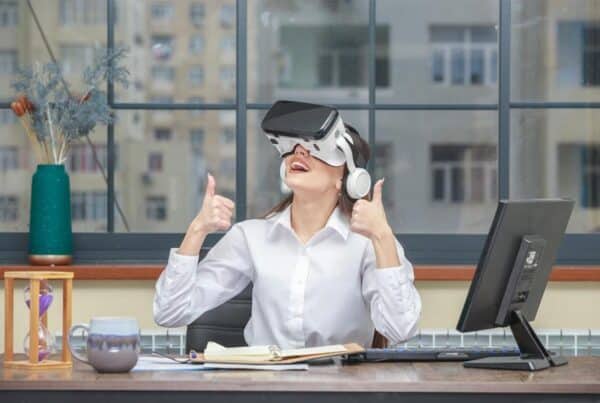
Introduction
360 video tours have gained popularity as an innovative way to showcase spaces, products, and experiences. These immersive tools allow users to explore environments interactively, providing a sense of presence that traditional media cannot match. However, despite their many advantages, 360 video tours also come with limitations that can affect user experience and effectiveness. This article will explore the various limitations of 360 video tours, examining technical challenges, user experience issues, and contextual constraints.
Technical Limitations
1. Image Quality Dependency
One of the most significant limitations of 360 video tours is their dependence on image quality. The effectiveness of a 360 tour heavily relies on high-resolution visuals to create a realistic experience. Low-quality images can lead to pixelation and blurriness, detracting from the immersive nature of the tour. Users may find it difficult to appreciate details in poorly captured environments, which can result in frustration and disengagement.
2. Loading Times and Performance Issues
Loading times can be a critical factor in the effectiveness of 360 video tours. Users expect seamless experiences, and slow loading can lead to impatience and abandonment of the tour. Additionally, performance issues such as lagging or stuttering can disrupt the flow of exploration. These problems are often exacerbated by limited internet bandwidth or device capabilities, making it essential for businesses to ensure that their tours are optimized for various platforms.
3. Device Compatibility
Not all devices are created equal when it comes to viewing 360 video tours. While many modern smartphones and computers support this technology, older devices may struggle with playback or navigation. This lack of compatibility can limit the audience that can access the tour effectively. Furthermore, not all browsers handle 360 content equally well; some may experience glitches or fail to render the tour correctly.
4. Limited Number of Scenes
Some platforms impose limits on the number of scenes that can be included in a single 360 video tour. For instance, certain software may only allow for a maximum of 16 scenes before previous ones become inaccessible or display incorrectly. This limitation can hinder comprehensive storytelling or exploration within a space, forcing creators to make difficult choices about what to include.
User Experience Challenges
1. Navigation Difficulties
While 360 video tours offer interactivity, navigating through these virtual environments can sometimes be cumbersome. Users may struggle with controls that are not intuitive or responsive enough for smooth exploration. For example, turning around or moving between rooms may require multiple gestures or clicks, leading to frustration and disengagement.
2. Learning Curve for Users
For users unfamiliar with navigating virtual environments, there can be a steep learning curve associated with 360 video tours. Some individuals may find it challenging to understand how to interact with the content effectively, which can detract from their overall experience. This learning curve may discourage potential users from fully engaging with the tour.
3. Motion Sickness and Disorientation
One common complaint among users of 360 video tours is motion sickness or disorientation during navigation. Rapid movements or abrupt changes in perspective can lead to discomfort for some viewers, particularly those sensitive to motion-related stimuli. This issue is especially prevalent in mobile devices where users must physically move their devices to navigate.
4. Limited Interaction Options
While 360 video tours allow for exploration, they often provide limited interactivity compared to other formats like virtual reality (VR) or augmented reality (AR). Users may find themselves unable to interact with objects in meaningful ways beyond simple navigation—such as clicking on hotspots for more information—which can diminish engagement.
Contextual Constraints
1. Not a Complete Replacement for In-Person Experiences
Despite their immersive qualities, 360 video tours cannot fully replicate the experience of an in-person visit. Certain aspects—such as sensory experiences like smell and sound—are absent in virtual tours, limiting the overall impact on users seeking authentic experiences. For example, while a virtual tour can showcase a hotel room beautifully, it cannot convey the ambiance or service quality experienced during an actual stay.
2. Misrepresentation Risks
While transparency is one of the strengths of 360 video tours, there is also a risk of misrepresentation if not executed carefully. Overly edited or curated content may lead viewers to form unrealistic expectations about what they will encounter in person. If users arrive at a location expecting one experience but find another, it can lead to disappointment and erode trust in the brand.
3. Contextual Limitations
The effectiveness of a 360 video tour is often context-dependent; certain environments lend themselves better to this format than others. For example, expansive spaces like hotels or museums may benefit from immersive exploration while smaller areas might feel cramped or less engaging when viewed virtually.
Conclusion
While 360 video tours offer numerous advantages—such as enhanced engagement and immersive experiences—they also come with limitations that must be considered when implementing this technology for marketing purposes or user engagement strategies. Technical challenges like image quality dependency and loading times can detract from user experiences; navigation difficulties and learning curves may frustrate viewers; contextual constraints remind us that virtual experiences cannot fully replace real-life interactions.To maximize the effectiveness of 360 video tours while mitigating these limitations:
- Invest in High-Quality Production: Ensure that visuals are captured at high resolutions and optimized for various devices.
- Optimize Performance: Focus on minimizing loading times and ensuring smooth navigation through careful testing across different platforms.
- Educate Users: Provide clear instructions on how to navigate the tour effectively.
- Combine Formats: Consider using traditional videos alongside 360 tours to provide comprehensive insights while catering to different viewer preferences.
By acknowledging these limitations and implementing strategies to address them effectively, businesses can leverage the power of 360 video tours while enhancing user experiences and driving engagement in an increasingly digital world.




